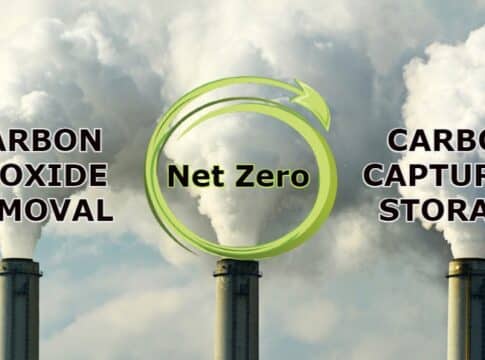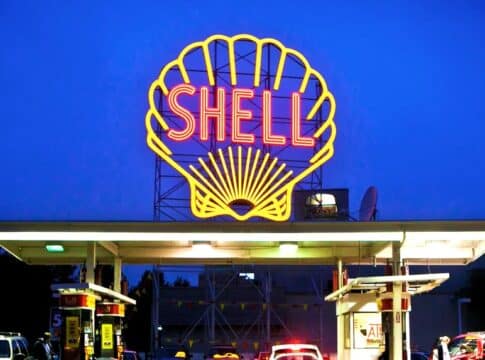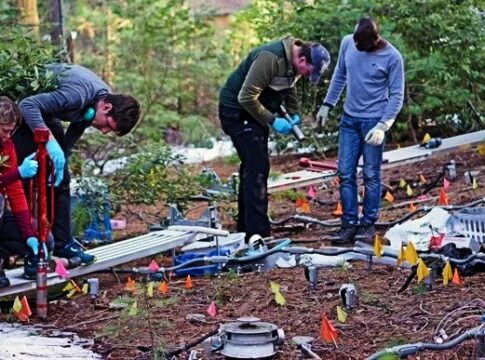Carbon Dioxide Removal (CDR) and Carbon Capture and Storage (CCS): A Primer
If you’ve been keeping up with the net zero trend, then you’ve probably heard the terms Carbon Dioxide Removal (CDR) and Carbon Capture and Storage (CCS) thrown around before.
Both are important tools in the ongoing fight against climate change. What you might not know, however, is that they actually refer to two different processes.
Generally speaking, CDR refers to processes and technologies that remove carbon dioxide from the atmosphere. Some examples of this include afforestation and reforestation.
On the other hand, CCS differentiates itself from CDR with the term “capture”. This refers to the fact CCS methods generally capture CO2 from specific points of emission, also known as “point sources”. An example of CCS would be capturing the carbon dioxide emitted by a specific industrial factory.
With that said, CDR and CCS are two sides of the same coin – they simply differ in where they remove the CO2 from. For both processes, the end goal is the same: to remove carbon dioxide that would otherwise end up in the environment, and to get rid of it by storing or using it up.
Various Types of CDR and CCS
Both CDR and CCS are expected to scale up significantly from where they are now in the IEA’s Net Zero Emissions by 2050 Scenario.
There are already a number of differing options for both. And we’ll go over some of the major ones in detail below.
For CDR, one of the most common types of projects is planting trees, which falls under either afforestation (planting trees where there weren’t trees before) or reforestation (planting trees where there used to be trees).
Trees and other types of vegetation store carbon through photosynthesis as they grow, making them fantastic natural carbon sinks.
Many of these forestation type projects qualify under the UNFCCC’s REDD+ framework. If you haven’t heard the acronym before, REDD+ stands for “Reducing Emissions from Deforestation and forest Degradation in developing countries”. The “+” includes activities that don’t directly involve planting trees such as forest management.
In a similar vein, some projects also aim to store carbon in the soil through special farming practices, or in certain types of ecosystems that work as excellent carbon sinks. Coastal wetlands and peat marshes are examples of such ecosystems that are particularly suited to sequestering carbon. As such, conserving and restoring these kinds of ecosystems also serves as a method of CDR.
Another offshoot of this type of CDR are blue carbon projects, named so for how they focus on ocean-based ecosystems. Coastal biomes such as tidal marshes and mangroves are thought to be more effective at removing carbon when compared to a forest of similar size on land.
Blue carbon ecosystems aren’t as well understood as traditional land-based ones though. But this is an exciting CDR field with lots of ongoing research.
Storing carbon in the above manners is collectively known as “biological sequestration”, where the carbon is stored in natural ecosystems.
Geological Carbon Sequestration
On the flip side of biological sequestration, we have “geological sequestration”, where the carbon is stored in deep rock formations. Much like how oil and gas deposits are usually found deep underground trapped between layers of impermeable rock, carbon can be stored the same way.
Types of CDR that allow for geological sequestration include technology-based solutions like Direct Air Capture (DAC) and Bioenergy with Carbon Capture and Storage (BECCS).
DAC involves directly removing CO2 from the air. BECCS involves capturing the carbon emissions from biological sources such as bioethanol or pulp and paper production. Both are critical to achieve the IPCC’s 1.5C scenario as shown above.
Example of DAC process by Climeworks
While BECCS technically involves removing carbon from a point source and has CCS in its name, it blurs the line between CDR and CCS. The biomass used in BECCS processes absorbed CO2 from the atmosphere while it grew. In effect, BECCS technically removes carbon from the atmosphere as a net result.
For instance, the process of fermenting corn to turn it into bioethanol releases carbon dioxide as a by-product. However, that corn also absorbed CO2 from the atmosphere as it was growing.
As a result, any CO2 captured from the fermentation process was actually effectively removed from the atmosphere.
On the subject of CCS and net zero, the technologies involved are much more straightforward than with CDR.
As mentioned, CCS is mostly often performed on point sources as that’s where it’s most easy and cost-effective to do. Large industrial plants, fossil-fuel-based energy plants, and other such facilities with significant carbon emissions are all viable targets for CCS.
The different types of CCS technologies differ in exactly how they capture carbon from emissions streams. Examples include absorption through carbon dioxide scrubbers, chemical looping combustion, and oxyfuel combustion, to name a few.
The Role of CDR and CCS in the Push to Net Zero
Though the world continues on the path to net zero, the transition will take time – decades worth of it.
In the meantime, there will continue to be plenty of ongoing essential processes worldwide that are difficult to make net zero with current technology. Steelmaking and cement manufacturing are two such examples of industrial processes that are hard to completely eliminate carbon emissions from.
For these industries, CCS will serve as a perfect solution for abatement.
On top of this, CDR will help to reduce carbon either already in the atmosphere, or already emitted by sources that are difficult to capture emissions from.
CDR and CCS are both key parts of our efforts to mitigate climate change. But they can’t fully replace the net zero transition.
Geological analysis has estimated that the world had a tremendous amount of CO2 storage capacity through geological sequestration. Yet, not all of this capacity is in accessible locations, or even cost-effective enough to use.
And the fact that there exist industries where it’s difficult to completely eliminate carbon emissions, as previously discussed, means that it’s even more important to remove other sources of carbon dioxide wherever possible.
Still, both CDR and CCS will play major roles globally as we continue on our 2050 net zero pathway. Expect to see heightened focus on both in the years to come as the fight against climate change progresses.
The post Carbon Dioxide Removal (CDR) and Carbon Capture and Storage (CCS): A Primer appeared first on Carbon Credits.



